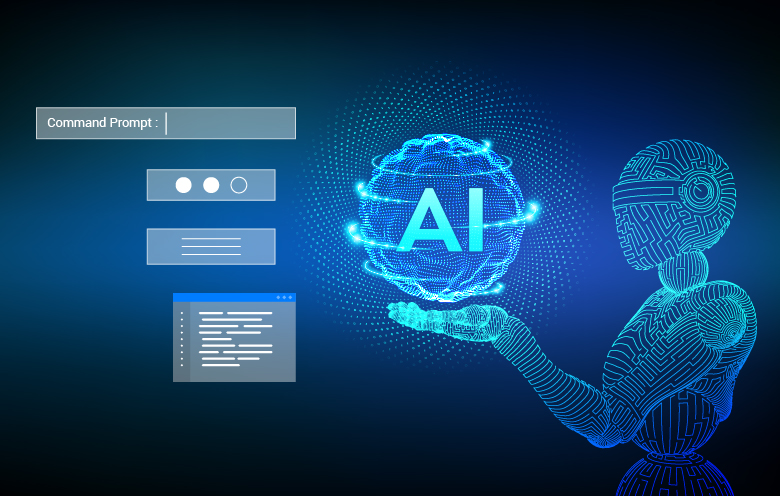Generative AI is one of the most exciting new technologies out there. It can create things like lifelike images, videos, music, written content, and even computer code—all on its own. The possibilities are amazing, and it’s already changing how people work and create. But building and using generative AI isn’t easy. There are many tough challenges to deal with, including technical problems, ethical concerns, real-world impacts, and how to manage it all in everyday business.
Working with a specialized Generative AI Development Company can help overcome these obstacles. With the right expertise and resources, such a company can guide projects through model selection, data handling, ethical considerations, and scalable deployment—ensuring your generative AI solution is both innovative and responsible.
In this blog, we will explore the key challenges in generative AI development in simple, layman-friendly language.
1. Understanding What Generative AI Is
Before diving into the challenges, it’s important to understand what generative AI actually means. Generative AI refers to a subset of artificial intelligence that focuses on creating new content. Instead of simply analyzing data, generative AI models can produce text, images, sounds, videos, or code that resemble something a human might create.
Some of the most popular generative AI tools today include ChatGPT (text generation), DALL•E (image creation), and MusicLM (music generation). These tools are built using large models trained on massive amounts of data, often called foundation models or large language models (LLMs).
2. Data-Related Challenges
Generative AI models need a lot of data to learn how to generate content. But there are several problems related to data:
- Data Quality: If the training data includes incorrect or biased information, the model will learn and repeat those mistakes.
- Data Privacy: Using real-world data raises concerns about user privacy. Sensitive or personal data can accidentally be included in training sets.
- Data Availability: For some fields or languages, there may not be enough high-quality data available to train accurate models.
- Copyright Issues: Much of the data used in training, such as books, art, or code, is protected by copyright. Using this without proper rights could lead to legal issues.
3. Model Complexity and Computational Cost
Generative AI models like GPT-4 or image generators are extremely large and complex. This brings several challenges:
- Training Time: It can take weeks or even months to train a large model.
- Hardware Requirements: High-performance GPUs or cloud-based infrastructure are needed, which can be very expensive.
- Energy Consumption: Training large models consumes a lot of electricity, raising concerns about environmental impact.
- Model Maintenance: Once deployed, these models still require updates and fine-tuning, which continues to demand resources.
4. Ethical and Social Challenges
Generative AI is powerful, but it can also be misused:
- Misinformation: These models can be used to generate fake news, impersonate people, or create misleading content.
- Bias and Fairness: If the training data contains stereotypes or biased information, the model may generate content that reinforces those biases.
- Job Displacement: As generative AI becomes more capable, there are fears that it could replace human jobs in writing, design, or customer service.
- Deepfakes: AI-generated images and videos can be manipulated to deceive or harm individuals, raising serious concerns about digital trust.
5. Explainability and Transparency
Generative AI models are often called “black boxes” because it’s hard to understand how they make decisions. This lack of transparency leads to several issues:
- Trust: Users may not trust a system they don’t understand.
- Debugging: It is difficult to identify and fix issues when the inner workings of the model are unclear.
- Accountability: When things go wrong, it’s hard to know who is responsible – the developers, the data sources, or the AI itself?
6. Evaluation and Accuracy
Evaluating generative AI is not as simple as checking whether an answer is right or wrong. Since these models produce creative outputs, judging quality becomes subjective.
- Human Evaluation Needed: Often, human reviewers are needed to judge whether generated content is good, making it harder to automate the process.
- Lack of Metrics: There are no universal standards for measuring creativity, originality, or correctness in generative AI content.
- Inconsistency: The same model might give great answers sometimes and poor ones at other times.
7. Security and Abuse Prevention
Generative AI systems can be exploited if not carefully managed:
- Prompt Injection Attacks: Users can manipulate input prompts in ways that lead the model to generate harmful or unintended outputs.
- Spam and Automation: AI-generated content can be used to flood platforms with spam or malicious content.
- Impersonation: Language and voice generation tools can be used to imitate real people, potentially for fraud or scams.
8. Scalability and Integration
Even once a model is developed, bringing it into real-world use involves many operational challenges:
- Integration with Existing Systems: Businesses need to connect AI models to their websites, apps, or workflows, which can be technically challenging.
- Latency and Speed: Users expect fast responses, but generative models often require more processing time.
- Scaling to Millions of Users: Handling traffic at scale without losing performance is difficult and costly.
9. Legal and Regulatory Concerns
As generative AI becomes mainstream, governments and organizations are working to regulate its use:
- Lack of Clear Laws: Many countries don’t yet have specific laws that address generative AI.
- Content Ownership: Who owns the content generated by AI – the user, the developer, or the model provider?
- Global Differences: Different countries may have different rules, making it hard for global companies to stay compliant everywhere.
10. Keeping Up With Rapid Advancements
The generative AI field is moving at lightning speed. New models, techniques, and tools appear almost every month.
- Continuous Learning: Developers and businesses must constantly update their skills to stay competitive.
- Tool Overload: With so many frameworks, APIs, and platforms, choosing the right tech stack becomes overwhelming.
- Version Management: Updating and maintaining models without disrupting service is another ongoing challenge.
Conclusion
Even though generative AI has a lot of potential, making it work well isn’t easy. There are many challenges along the way—like needing high-quality data, powerful computers, and a lot of time to train the systems. On top of that, there are important ethical issues too, such as making sure the AI isn’t biased or used in harmful ways. Developers and companies need to carefully handle these issues to use generative AI responsibly and effectively.


